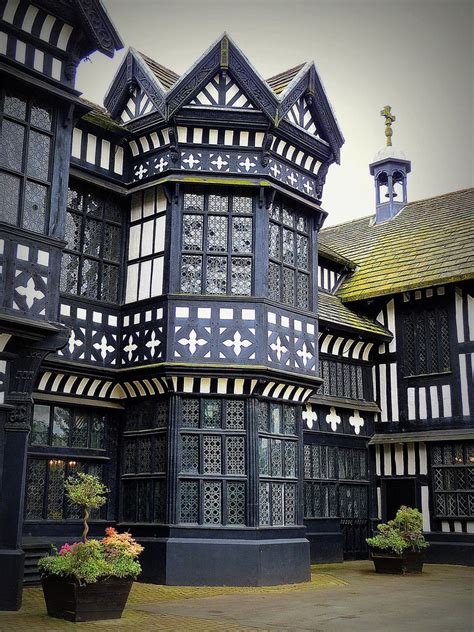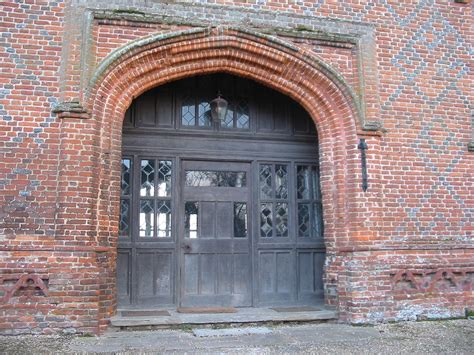tudor arquitetura | tudor architectural design tudor arquitetura “The enduring charm of Tudor architecture lies in its unmistakable character and timeless appeal. From the intricate timber framing to the majestic Tudor gatehouses, these buildings hold . New for Winter 2023, the 30 Montaigne ankle boot is both a modern and .
0 · tudor timber architecture
1 · tudor architecture wikipedia
2 · tudor architecture leeds
3 · tudor architecture interior
4 · tudor architecture history
5 · tudor architecture definition
6 · tudor architectural style
7 · tudor architectural design
31 mm. 36 mm. 41 mm. Filters. Datejust 36. Oyster, 36 mm, Oystersteel and white gold. Datejust 41. Oyster, 41 mm, Oystersteel and white gold. At a single glance. Cyclops lens. Discover more.
tudor timber architecture
The Origins of Tudor Architecture. Key aspects of the Tudor period that shaped this architectural style: Defining Characteristics of Tudor Homes. Exposed Timber Framing. Steep Gabled . Tudor architecture is a type of architecture that was popular in England during the 16th century, during the reign of the Tudor monarchs. These were six monarchs who ruled . Tudor architecture, a style that flourished in England from the late 15th century to the early 17th century, is one of the most recognizable and beloved architectural styles in .“The enduring charm of Tudor architecture lies in its unmistakable character and timeless appeal. From the intricate timber framing to the majestic Tudor gatehouses, these buildings hold .
The Tudor architecture began with Cardinal Thomas Wolsey's construction of Hampton Court Palace in 1515, shaping a new architectural style during the Tudor era.Tudor architecture, prominent during the Tudor dynasty in England (1485-1603), is characterized by its steeply pitched gable roofs, half-timbering, and tall, narrow windows with small panes. .
gucci bum bag pandabuy
O estilo Tudor, em arquitetura, é o último desenvolvimento da arquitetura medieval durante o período Tudor (1485–1603) e até mesmo posteriormente, por patronos conservadores. La arquitectura Tudor se desarrolló en Inglaterra a finales del siglo XV y principios del XVI durante el comienzo del reinado de los monarcas Tudor. Mezcla elementos de la .A arquitetura Tudor Revival emula os estilos de construção ingleses do século 16, bem na junção das eras do final da Idade Média e do início da modernidade. O estilo foi popular por volta de 1890-1940 e foi focado na precisão histórica (dentro dos limites do conforto moderno, é claro).Na Inglaterra e no País de Gales, o Período Tudor ocorreu entre 1485 e 1603, incluindo a era elizabetana durante o reinado de Elizabeth I (1558–1603). O período Tudor coincide com a dinastia da Casa de Tudor na Inglaterra, que começou com o reinado de Henrique VII.Sob a dinastia Tudor, a arte, a arquitetura, o comércio, a exploração e o comércio floresceram [1].

A arquitetura do Reino Unido, ou arquitetura britânica, consiste em uma combinação eclética de estilos arquitetônicos, desde aqueles anteriores à criação do Reino Unido, como romana, até a contemporânea do século XXI. A Inglaterra viu os desenvolvimentos mais influentes, embora a Irlanda, a Escócia e o País de Gales tenham adotado estilos únicos e desempenhado papéis .A arquitetura de Tudor permaneceu popular para os patronos conservadores da faculdade, mesmo depois de ter sido substituída no prédio doméstico. Partes das adições às várias faculdades da Universidade de Oxford e da Universidade de Cambridge ainda eram realizadas no estilo Tudor, coincidindo com os primeiros movimentos do renascimento .
Arquitetura gótica é um estilo arquitetónico caracterizado por formas estruturais e expressivas particulares, sendo a evolução da arquitetura românica e que precede a arquitetura renascentista.Teve início no norte da França entre os anos 1050 e 1100, originalmente chamando-se "Obra Francesa" (Opus Francigenum), embora a Catedral de Dublim, na . The Tudor arch in particular became a distinguishing feature for this architectural period. The depressed arch, with its significant width, became an architectural focal point in iconic buildings such as King’s College Chapel, Cambridge, and Gloucester Cathedral. Other unmistakable details, such as the classic half-timbered exteriors, were . Architecture, Tudor, Architecture, Domestic -- England, Landscape design -- England -- History -- 16th century, Landscape design -- England -- History -- 17th century Publisher New Haven : Published for the Paul Mellon Centre for Studies in British Art by Yale University PressCharacterized by steeply pitched roofs, half timber framing and brick or stone walls, Tudor homes are one of the most distinguishable architectural styles. These designs, encompassing both Tudor architecture of the exterior and interior, ranging from classic to modern interpretations, show just how undeniably beautiful and charming the style .
Uma casa georgiana. Arquitetura georgiana foi o conjunto de estilos arquitetônicos vigentes entre 1714 e 1830. Recebeu o nome dos quatro primeiros monarcas britânicos da Casa de Hanover — Jorge I, Jorge II, Jorge III e Jorge IV - que reinou em sucessão contínua de agosto de 1714 a junho de 1830. As chamadas grandes cidades georgianas das Ilhas Britânicas foram .
Tudor Revival Refers to the style of English architecture and interior design in the first half of the 19th century and again in the early 20th. Drawn from domestic architecture of the Tudor period dating 1485-1547, architectural forms and decorative motifs include diapered brickwork, half-timbering, stained glass, and Tudor roses, which were .
Characterized by steeply pitched roofs, half timber framing and brick or stone walls, Tudor homes are one of the most distinguishable architectural styles. These designs, encompassing both Tudor architecture of the exterior and interior, ranging from classic to modern interpretations, show just how undeniably beautiful and charming the style .Descubra o relógio TUDOR Black Bay GMT m79830rb-0012 - Calibre de Manufatura MT5652 (COSC) - Caixa de 41 mm em aço - Bracelete em tecido. . Arquitetura integrada. Reserva de marcha. Reserva de marcha de aproximadamente 70 horas. Coroa. Coroa de rosca em aço com a rosa TUDOR em relevo, tubo da coroa em aço escovado com acabamento circular .Characterized by steeply pitched roofs, half timber framing and brick or stone walls, Tudor homes are one of the most distinguishable architectural styles. These designs, encompassing both Tudor architecture of the exterior and interior, ranging from classic to modern interpretations, show just how undeniably beautiful and charming the style .
tudor architecture wikipedia
Tudor architecture is an architectural style that emerged between the 15th and 16th centuries when the Tudor family came into power in Britain.It is a transitional architectural style with an amalgamation of characteristics of Renaissance and Gothic architectural styles. The most prominent feature of a Tudor-style building is the exposed wooden beams and the .The Tudor architectural style is the final development of medieval architecture in England and Wales, during the Tudor period (1485–1603) and even beyond, and also the tentative introduction of Renaissance architecture to Britain.
Tudor architecture refers partly to the architectural style that emerged between 1485 and 1603 when artisans built sophisticated two-toned manor homes combining Renaissance and Gothic design elements.The Origins of Tudor Architecture. Key aspects of the Tudor period that shaped this architectural style: Defining Characteristics of Tudor Homes. Exposed Timber Framing. Steep Gabled Roofs and Tall Chimneys. Leaded Windows and Stone Mullions. Ornate Doorways and Arched Entries. Tudor architecture is a type of architecture that was popular in England during the 16th century, during the reign of the Tudor monarchs. These were six monarchs who ruled England from 1485 to 1603, starting with Henry VII and ending with Queen Elizabeth I. Tudor architecture, a style that flourished in England from the late 15th century to the early 17th century, is one of the most recognizable and beloved architectural styles in British history.
“The enduring charm of Tudor architecture lies in its unmistakable character and timeless appeal. From the intricate timber framing to the majestic Tudor gatehouses, these buildings hold stories of a bygone era, enchanting us with their splendid craftsmanship and historical significance.” The Tudor architecture began with Cardinal Thomas Wolsey's construction of Hampton Court Palace in 1515, shaping a new architectural style during the Tudor era.
Tudor architecture, prominent during the Tudor dynasty in England (1485-1603), is characterized by its steeply pitched gable roofs, half-timbering, and tall, narrow windows with small panes. This style often includes ornate chimneys, brick exteriors, and charming, asymmetrical facades.
O estilo Tudor, em arquitetura, é o último desenvolvimento da arquitetura medieval durante o período Tudor (1485–1603) e até mesmo posteriormente, por patronos conservadores.
tudor architecture leeds
tudor architecture interior

Past meets present: inside 30 Avenue Montaigne, Dior’s new look Parisian flagship. The spiritual home of Dior, global flagship 30 Avenue Montaigne in Paris .
tudor arquitetura|tudor architectural design

























